For Product Registration and general enquires please contact us
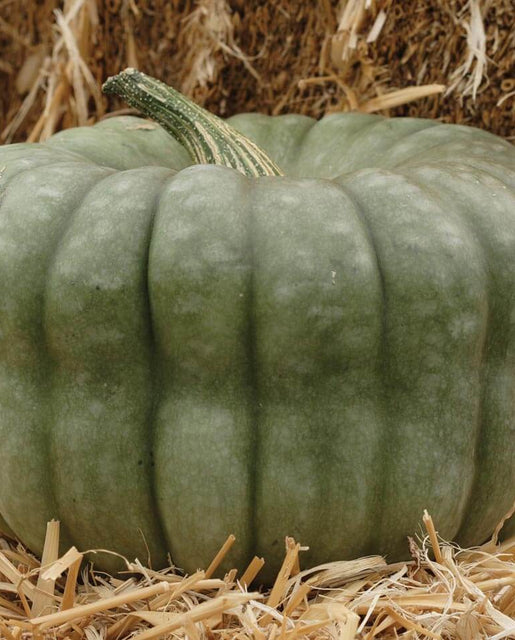
Queensland Blue
$8.99 – $33.99
Not your average Halloween Jack-o-Lantern! Striking blue, flattened, highly ribbed pumpkins that average 10-20 lbs each. The flesh of Queensland Blue is golden and very sweet, with a flavour that lasts for months in storage.
Shipping & Returns
West Coast Seeds ships anywhere in North America. However, we are not able to ship garlic, potatoes, asparagus crowns, bulbs, onion sets, Mason bee cocoons, or nematodes outside of Canada. We regret, we cannot accept returns or damages for orders outside of Canada. The minimum shipping charge to the US is $9.99.
Description
More details about Queensland Blue
C. maxima. Not your average Halloween Jack-o-Lantern! Striking blue, flattened, highly ribbed pumpkins that average 10-20 lbs each. The flesh of Queensland Blue is golden and very sweet, with a flavour that lasts for months in storage. Queensland Blue pumpkin seeds are an old Australian heirloom that came to America in 1932. It has all the keeping power of a Hubbard squash. Let the fruits mature fully on the vine until the foliage begins to die back. Then wipe the outside of each fruit with a weak solution of bleach in water. This will kill off any bacteria and promote good storage. Be sure to use any nicked or cut fruits right away, as they will not have the same storage potential. Matures in 110-120 days. (Open-pollinated seeds)-
- Sweet flavour lasts months in storage
- Old Australian heirloom
- Squashes average 10-20lb each
- Open-pollinated seeds
- Matures in 110-120 days
All About Queensland Blue
Latin
Cucurbita maxima & C. pepo.
Family: Cucurbitaceae
Difficulty
Easy, but these big plants require lots of room.
Season & Zone
Season: Warm season
Exposure: Full sun
Timing
Direct sow or transplant in late spring when soil warms up. For transplants, start seeds indoors 4-6 weeks after the last frost date. Try to get the plants into the ground no later than the summer solstice. Optimal soil temperature for germination: 25-35°C (68-95°F). Seeds should sprout in 7-14 days.
Starting
Sow seeds 2cm (1″) deep. Sow 3 seeds in each spot you want a plant to grow and thin to the strongest plant. Space plants at a minimum of 90-120cm (36-48″) apart in rows 120-180cm (48-72″) apart. If starting transplants indoors, consider using the 12-cell plug inserts.
Growing
Ideal pH: 6.0-6.8. These big plants need lots of food. Choose a sunny spot with fertile, well-draining soil. Dig in a generous quantity of finished compost and/or composted manure. Dig in 1 cup of complete organic fertilizer under each plant. All pumpkins grow male flowers first, then the female flowers are produced. The female flowers have tiny fruits at the base of the petals and require pollination by bees, mostly. Incomplete pollination is common at the beginning of the season, and results in small fruits that are misshapen at the flower end. Discard these damaged fruits before they rot.
For the largest pumpkins, feed weekly throughout the growing season with fish or kelp based fertilizer. Keep the huge plants well watered, particularly in hot weather. Always water the soil, and avoid any form of overhead watering other than rain. Fruit will grow larger if you keep only one fruit per vine. As the fruit develops, try to gently encourage it to grow at a 90° angle to the vine itself. The largest pumpkin varieties will grow on their sides.
Harvest
Like other winter squash, pumpkins are mature when they have coloured up well and their stems are crisp. For the best sugar content, cut the stem about 4cm (2″) or so from the body of the fruit. If the weather is dry, allow the pumpkins to cure in the field for 10 days, or in a warm room for 4-5 days. Bring pumpkins in under cover before rain.
Seed Info
In optimal conditions at least 80% of seeds will germinate. Usual seed life: 2 years. Per 100′ row: 60 seeds, per acre: 6.5M seeds.
Diseases & Pests
Powdery Mildew: An airborne fungal disease that causes white spots on the leaves at the end of the season. Several home-sprays are said to be somewhat effective. Spray any of the following at 7-10 day intervals. 1tsp baking soda and 1 quart of water with a squirt of dish soap, or 1 part milk to 9 parts of water. You can add a little kelp based fertilizer to the mix. Resistant varieties get the mildew just a few days later than the other varieties.






How to Grow Pumpkins

Step 1: Timing
Direct sow or transplant in late spring when soil warms up. For transplants, start seeds indoors 4-6 weeks after the last frost date. Try to get the plants into the ground no later than the summer solstice. Optimal soil temperature for germination: 25-35°C (68-95°F). Seeds should sprout in 7-14 days.
Step 2: Starting
Sow seeds 2cm (1″) deep. Sow 3 seeds in each spot you want a plant to grow and thin to the strongest plant. Space plants at a minimum of 90-120cm (36-48″) apart in rows 120-180cm (48-72″) apart. If starting transplants indoors, consider using the 12-cell plug inserts.
Step 3: Growing
Ideal pH: 6.0-6.8. These big plants need lots of food. Choose a sunny spot with fertile, well-draining soil. Dig in a generous quantity of finished compost and/or composted manure. Dig in 1 cup of complete organic fertilizer under each plant. All pumpkins grow male flowers first, then the female flowers are produced. The female flowers have tiny fruits at the base of the petals and require pollination by bees, mostly. Incomplete pollination is common at the beginning of the season, and results in small fruits that are misshapen at the flower end. Discard these damaged fruits before they rot. For the largest pumpkins, feed weekly throughout the growing season with fish or kelp based fertilizer. Keep the huge plants well watered, particularly in hot weather. Always water the soil, and avoid any form of overhead watering other than rain. Fruit will grow larger if you keep only one fruit per vine. As the fruit develops, try to gently encourage it to grow at a 90° angle to the vine itself. The largest pumpkin varieties will grow on their sides.
Step 4: Germination
In optimal conditions at least 80% of seeds will germinate. Usual seed life: 2 years. Per 100′ row: 60 seeds, per acre: 6.5M seeds.
Step 5: Harvest
Like other winter squash, pumpkins are mature when they have coloured up well and their stems are crisp. For the best sugar content, cut the stem about 4cm (2″) or so from the body of the fruit. If the weather is dry, allow the pumpkins to cure in the field for 10 days, or in a warm room for 4-5 days. Bring pumpkins in under cover before rain.
Tips!
Disease & Pests: Powdery Mildew: An airborne fungal disease that causes white spots on the leaves at the end of the season. Several home-sprays are said to be somewhat effective. Spray any of the following at 7-10 day intervals. 1tsp baking soda and 1 quart of water with a squirt of dish soap, or 1 part milk to 9 parts of water. You can add a little kelp based fertilizer to the mix. Resistant varieties get the mildew just a few days later than the other varieties.Additional information
| Matures | in 110-120 days |
|---|---|
| Season | Warm season |
| Exposure | Full-sun |
| Quantity | 3g, 5g, 25g |
You must be logged in to post a review.




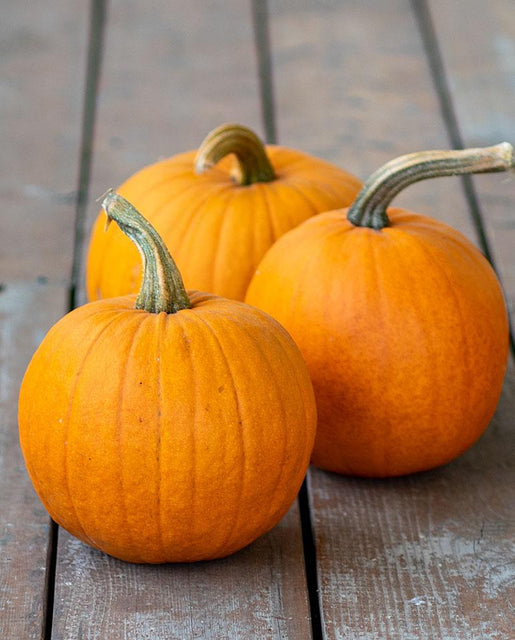
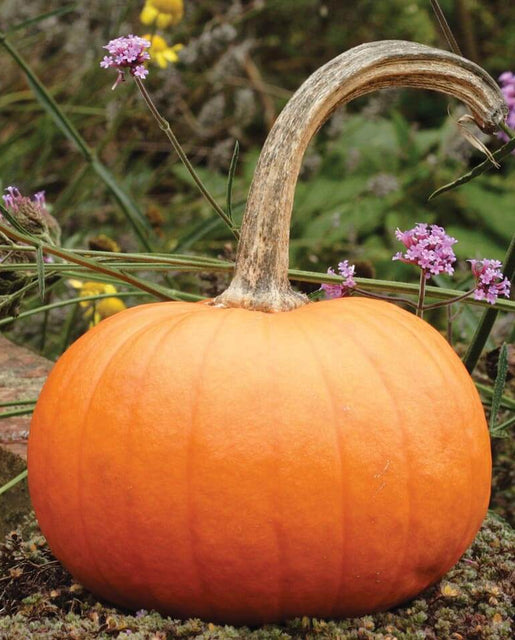

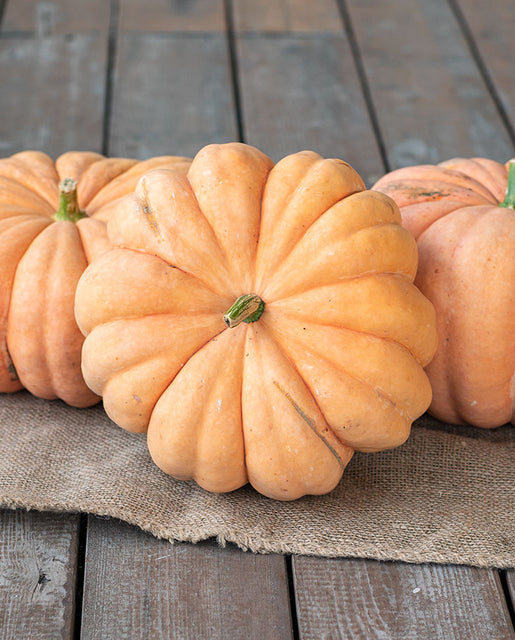
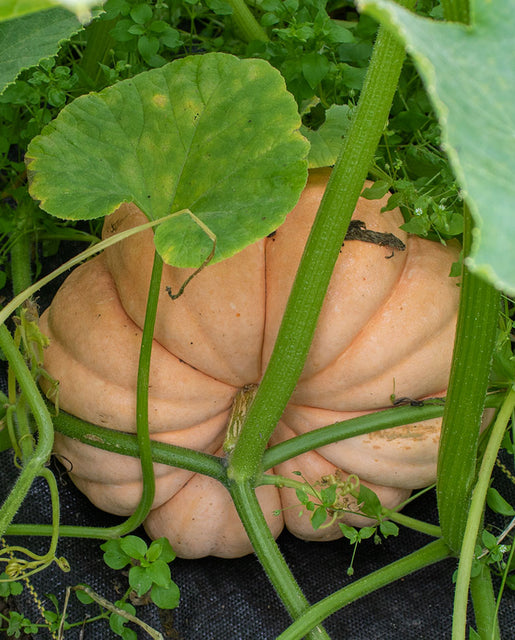




Reviews
There are no reviews yet.